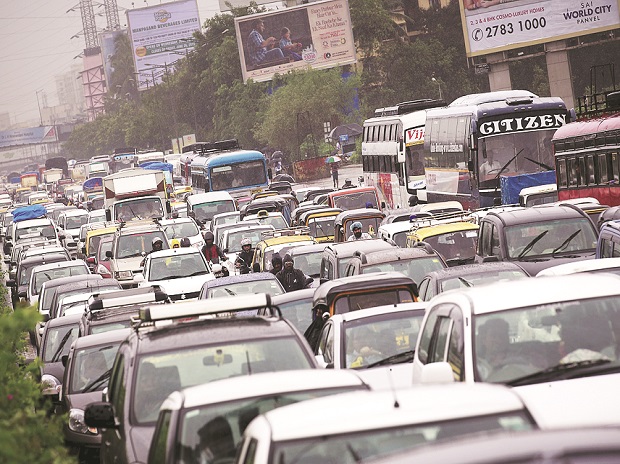-
ALSO READ
India's GST rates are highest in the world: Manpreet Singh Badal GST rate cut: From diamonds to used cars, here's full list of revised items Digital push to tax cut, here's what to expect from GST Council's key meet Bring petroleum, real estate, electricity under GST: Congress Biggest GST bonanza: 28% tax only on 50 luxury items, eating out cheaper -
The much-hyped and keenly awaited policy on voluntarily scrapping the 15-year old vehicles that are set to become a reality by month-end will only give a marginal boost to commercial vehicle sales. The impact will mostly be confined to small and medium-duty commercial vehicle sales as these are the ones that will meet the age criterion. The heavy-duty vehicles –those between 16 to 49-tonne as a segment has evolved only in the past decade and hence may not benefit from the policy, said transporters and officials at auto firms. Irrespective of the scheme the finer details of which are still to be made public, manufacturers expect truck and bus sales to touch a six-year high by end of the current fiscal on the back of a strong replacement demand that is being led by road construction projects and a pick-up in economic activity.
Abhay Damle, Joint Secretary, Ministry of Road Transport and Highways, said the policy is yet to be finalized. “I can only say, it’s under the consultative process, and it is likely to be concluded by March end,” he said while refusing to comment on the contours of the policy.
On February 28, the PTI reported that the finance ministry has approved the policy to scrap vehicles that are more than 15 years old. The policy document will now go to the goods and services tax (GST) council, it said. The programme, in its first phase, will target the commercial vehicles. The draft V-VMP policy has proposed to bring under its purview vehicles bought on or before 31 March 2005, numbering about 28 million.
Even as truck and bus manufacturers are lauding the move, they said the impact of the policy will not be sudden and play out over the next two to three years, as transporters are unlikely to rush to buy the vehicles immediately and adopt a more staggered approach.
“It’s a good move for the industry,” said Gopal Mahadevan, the chief financial officer at Ashok Leyland adding that companies are waiting for the notification to see the finer details.
Mahadevan estimates an incremental volume of 600,000 to 700,000 trucks and buses over the next two to three years after the scrappage scheme takes effect. The current annual volume of India’s commercial vehicle industry is 327,000 units. Commercial vehicle market leader Tata Motors declined to comment for the story.
Vinod Aggarwal, managing director and chief executive at Volvo Eicher Commercial Vehicles, said, “While this is a very positive step as it will encourage those with vehicles older than 15 years, to voluntarily scrap their vehicles and add to the replacement demand, I am not expecting a huge volume surge from the move."
Erich Nesselhauf, managing director and chief executive at Daimler India Commercial Vehicles, said, “Removing the oldest and most polluting vehicles from Indian roads would be the smartest thing to improve air quality very quickly. No other single measure will give the same, much-needed benefit to people and the environment as quickly."
Heavy-duty trucks operating with National Permit will not qualify for the programme as owing to their restrictive age limit, they would have anyways gone off the key trunk routes and now ply on shorter distances. Moreover, 15 years back the market for heavy-duty multi-axle trucks that comprises of tractor trailers (carries heavy goods for long distance) tippers (used in mining and construction applications) and haulage trucks (deployed by capital goods industry), was very small and fuel-guzzling underpowered trucks produced by Indian manufacturers dotted the landscape of the transport industry. These trucks, which are still running in the small towns and semi-urban areas are the ones that will come within the purview of the policy. These trucks must have gone through multiple ownership and those owning them are using it for small trips to run the errands. They are, therefore, unlikely to rush into buying new ones even when incentivised.
"It’s not clear how the incentive scheme will work. As per unconfirmed media reports, the trucker will benefit from scrap value of the old truck and from lower GST rates. The GST rate on commercial vehicles currently stand at 28 per cent. To incentivise purchase of new trucks, the GST Council may lower the rate for a limited period.
VECV’s Aggarwal said the scrappage scheme will only add further fillip to an already buoyant truck market. Led by a strong replacement demand, commercial vehicle sales are expected to close the current fiscal at a six-year high. VECV’s facilities, he pointed out are running at optimal capacity after a hiatus of six years. The company will take a call on expansion over the next three months.
Transport analysts do not see much merit in scrappage and believe that fitness instead of vehicle’s age should be the criteria for scrappage. “The aspects of pollutions are being overplayed,” said SP Singh, senior fellow at New Delhi based think-tank, Indian Foundation of Transport Research and Training (IFTRT). “You are looking to cull vehicles which are anyways not being allowed to operate within the city limits where pollution is an issue. The rationale behind the move isn't clear,” said Singh pointing out that the government should rather focus on fitness regime of the vehicle. “India being a poor country cannot afford such schemes,” he said.







RECOMMENDED FOR YOU